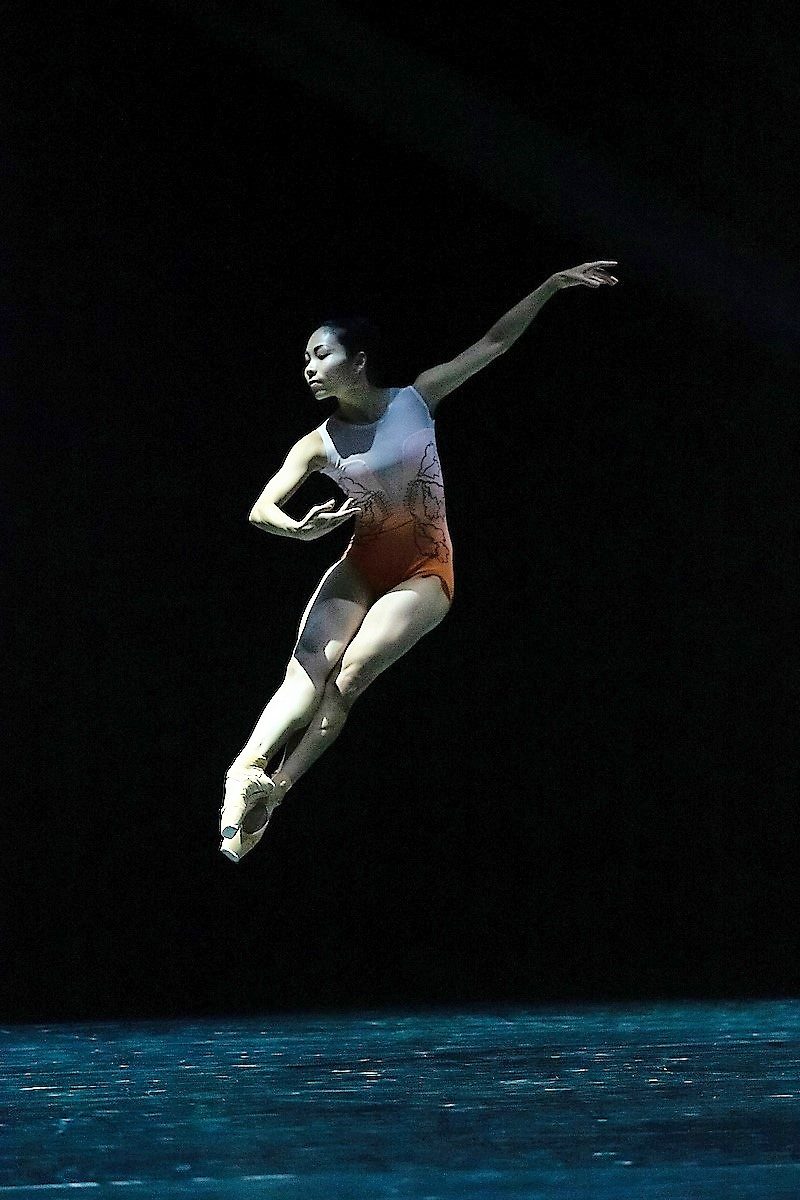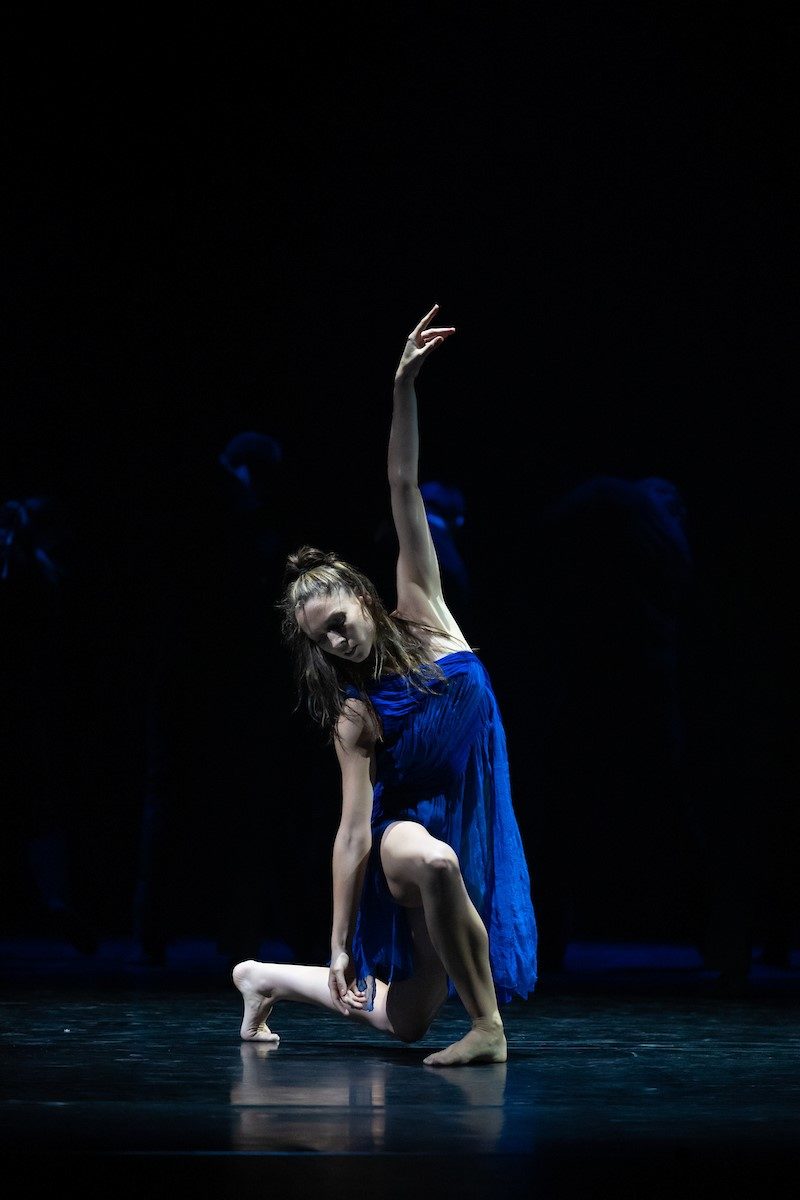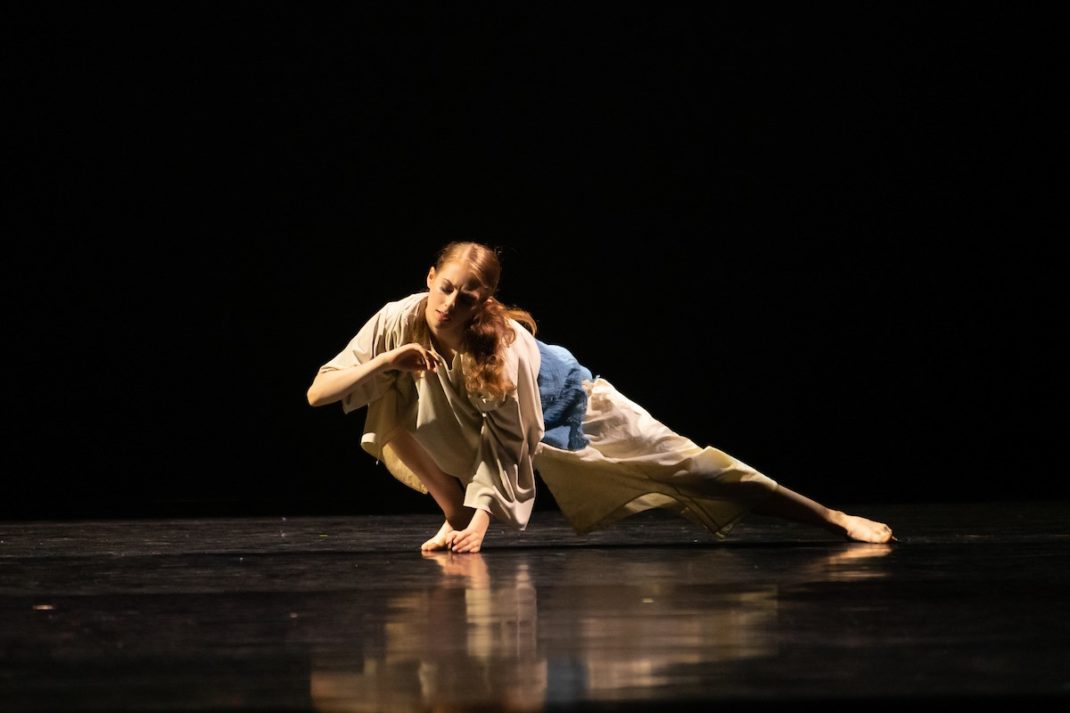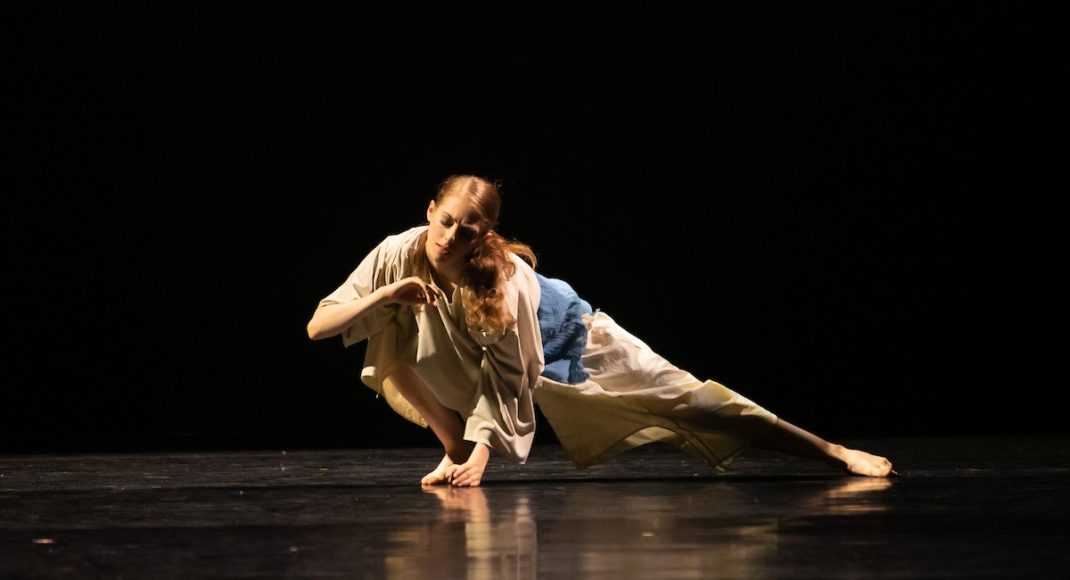1-2 March 2019, Opera House Wellington
Reviewed by Jennifer Shennan
This program to open 2019 has four new and contrasting works that will appeal to audiences in different ways. The dancers, as always, give their all, but the production needs to settle down yet, and the lighting effects be reduced by perhaps 50%, if it is to source the power of theatre.
Hine the first work, by Moss Paterson, opens with a strongly rendered haka fronted by males, but the following sequence for females, with the unexpected choices of pointe shoes and scantily clad dancers, is a challenge to reconcile with the evocation of a whare whakairo. The first woman in Maori mythology, Hine ahu one, has been a number of times choreographed—(I think of Louise Potiki Bryant, of Kelly Nash, and of Merenia Gray’s works, and believe they could all be considered for future possible restagings). I found the back projections for this Hine often distracting, and the aural overload a challenge. I am no fan of strobe light in the theatre at the best of times, believing it belongs to the rock concert stage or the disco bar, and often weakens the development of form in a choreography. So Hine was for me, with its various quotes from other dances we have seen recently, a work in progress.
Y(It is decades since this company performed it, but no-one forgets how Gray Veredon harnessed the ihi, wehi and wana of haka into his classic cameo work, Tell Me A Tale. Anyone wishing to choreograph Te Ao Maori onto a ballet stage needs to study that work, and Veredon, a pioneering member of this Company, would be willing to help—right now though he is impressively occupied with staging a new full-length commission at Polish National Ballet. One could also consider bringing back to their home company some of our other ex-pat choreographers and teachers who have made strong careers abroad—Cameron McMillan, Mark Baldwin, Andrew Simmons, Martin James and Patricia Rianne come to mind).
The second work is by James O’Hara, The Sky Is Not So Different From Us, Perhaps… with musician Anita Clark on stage. The work has a layered movement texture I found cumulatively mesmerising. Ceaseless pulses and undulations hint at the physics inside a human body—the rhythms of breathing and of blood circulating, as measures of life, except for one sad Pierrot figure standing in catatonic contrast until the violin vibrations thaw her out. The ever-repeating tape-loop of violin and vocals adds to the work’s atmosphere and mystery. Multi-layered costumes echo the choreographic theme, though for some of them, less would be more (and why a very tall man would wear a constricting mid-calf pink skirt I found impossible to fathom). The best of this work is very good indeed.


(left) Mayu Tanigaito in The ground beneath our feet; (right) Abigail Boyle in Artemis rising, Royal New Zealand Ballet, 2019. All photos: © Stephen A’Court
Shaun James Kelly’s work, The Ground Beneath our Feet, is a winner. He summons the airborne energy and élan we have always welcomed from the dancers in our Company, whatever the chosen choreographic style or aesthetic. I personally prefer to hear Bach in the scores as left to us, so the doctored treatment of the Violin Concerto, while you can do it, did not seem to me to add anything new. A galvanising pleasure though to see the commitment between partners within each dancing couple. The total frisson of the evening for me was Mayu Tanigaito. The prodigious technique of this dancer allows her to transform to a hummingbird, a diving swallow, a fairy tern. That she can do it all and more, and flash a smile the while, puts her in a class of her own. (Many of us have long wished that the superb full-length work Madame Butterfly, by Australian choreographer Stanton Welch, and stunning design by Peter Farmer, could be re-staged from our Company’s strong and richly defined repertoire, and the title role offered to this dancer as a vehicle for her talent).
This season marks the retirement, after 13 stalwart years dancing, of Abigail Boyle, a much loved and highly versatile performer with classical, dramatic and comic abilities in spades. The work Artemis Rising, choreographed for her by Sarah Foster-Sproull, was effectively a solo, with other dancers as a shadow chorus. It leaves some striking images for us to savour, and acts as tribute to Abigail’s performing, and a blessing on her future career transition (she plans to develop a teaching and coaching career).
The purest combination of technique, phrasing and line was to be seen whenever watching Abigail in class in the studio—an experience I will treasure to the end of my days. Many know and love this dancer, and wish her the very best for the coming years. (Readers may care to read the fine interview with Bess Manson published in The Dominion Post, 2 March 2019, and available online at www.stuff.co.nz—Dancer Abigail Boyle, Breaking through the fourth wall).She has been given a spirited and fitting farewell.
A recent Company newsletter advised that they are also currently considering how to honour the significant contribution to ballet and theatre in New Zealand of Sir Jon Trimmer who gave his retirement performance late last year. If that turns out to be an 80th Birthday Benefit Gala in September, say, one can imagine the Opera House dome needing to be opened to let out the tsunami of excitement and gratitude that New Zealanders would want to show him by way of salute and thanks for the legendary 60+ years career with this Company. Kia ora rawa atu, he totara nui o te ao kanikani o Aotearoa. I nga ra o mua, i nga ra inaianei—he wiri mo he takahia —taonga enei. Tena koe, e hoa.
Jennifer Shennan, 2 March 2019
Featured image:Caroline Wiley in The sky is not so different from us … perhaps. Royal New Zealand Ballet, 2019. Photo: © Stephen ACourt


One thought on “Royal New Zealand Ballet Choreographic Series”